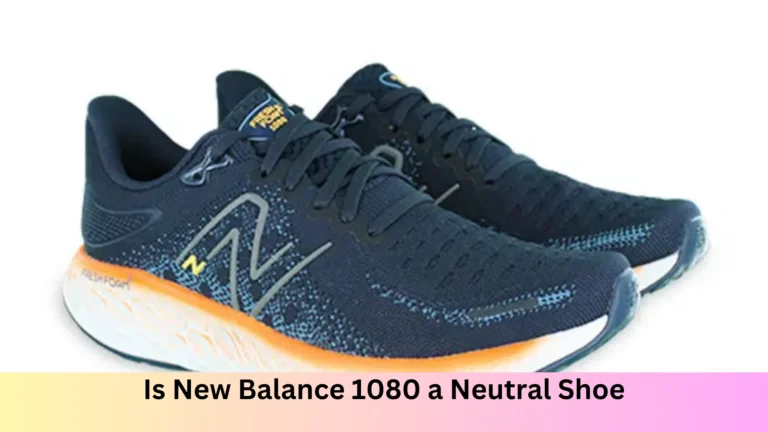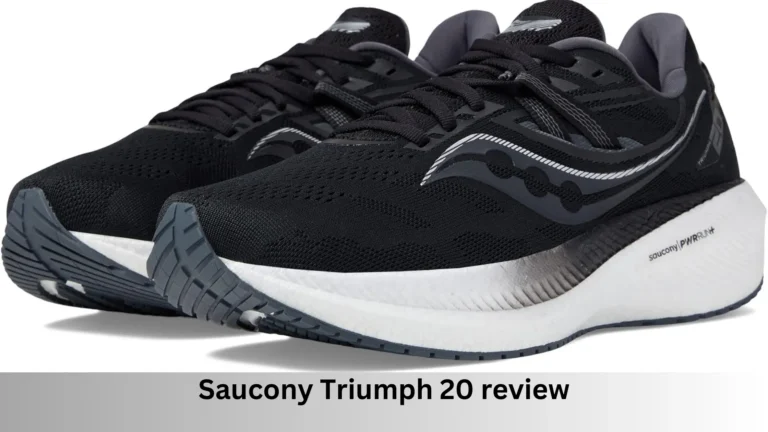
Which Sole Material Is Best for Heel Pain?
Finding the most comfortable sole material comes from cushioning, support, and flexibility. The soles are the bottom of the house they’re not, your feet won’t even be comfortable. Some examples of materials include EVA, rubber, and PU (polyurethane). Each has certain benefits: EVA is lightweight, bouncy, and light; rubber gives it good grip and durability; PU combines strength with fair comfort. But the best material depends on what you will do with them: run, walk, or stand there. Let’s break this down so you can make a pretty informed decision.
Which Sole Material Is Comfortable?
Comfortable sole materials ensure the right balance of softness and support. The most popular material is EVA (Ethylene Vinyl Acetate), as it is lightweight and cushiony, making it the best for people who are always on their feet. Some insoles have a layer of memory foam that molds itself to the shape of your foot, providing a comfortable experience. Rubber soles although a little heavier do pretty well as shock absorbers and keep a pretty solid grip; perfect for a slippery floor. Comfort-loving individuals might want to keep an eye out for some EVA midsole rubber outsoles. It combines the two best of their worlds.

Which Material Is Best for the Sole of Shoes?
The best material for a shoe’s sole is what it is used for. Rubber is the best when it comes to being strong and giving a good grip, making it popular for outdoor and sports shoes. For people who want lightweight soles with good padding, EVA is the best choice, great for running or everyday wear. Polyurethane (PU) soles are tougher, a bit heavier, and last longer, with which formal shoes and work boots are often equipped. The best choice for those needing a combination of grip, flexibility, and comfort—for trail running or for exercise at the gym—comes in a hybrid mix of rubber and EVA.
Which Sole Is Best for Running?
For running, you do want a shoe with that impact-absorbing sole feature with good grip and sufficient support in the way to go. EVA shoes have been very popular as light and responsive soles in running shoes. Running often gives you that sort of “spring” of springiness. Most running outsoles are made of rubbers for longer life and provide excellent grip, especially on anything irregular and slippery. Some premium shoes have TPU, known as Thermoplastic Polyurethane, for reinforcement without losing flexibility. For casual joggers to marathon fans, a mix of EVA in the midsole with rubber in the outsole is usually the most desirable for comfort and performance.
Which Sole Material Is Best, EVA or Rubber?
It’s a face-off between two fantastic materials—EVA and rubber. EVA is great at cushioning and is very light. It is the favorite material for running and casual shoes. It’s perfect if you want to feel like walking on clouds. Rubber is known for its superior durability and slip-resistant properties. When working or hiking in slippery conditions or requiring long-lasting shoes, rubber is the preferred material. For most everyday purposes, shoes with EVA midsoles and a rubber outsole are the sweetest spot between comfort and functionality.
Read Also: What Material Are Most Running Shoes Made Of?
Which Sole Material Is Best for the Rainy Season?
For the rainy season, it is best to have rubber soles because they have the best slip resistance and properties that are water-resistant. Rubber has a strong grip on wet and slippery surfaces, so it is best for maintaining stability and avoiding accidents. It is also durable and does not absorb water, so your shoes remain lightweight and functional even with heavy rains.
Some of the shoes designed for rainy weather come with a rubber sole combined with some features like grooves or patterns, which further enhance the grip. Avoid EVA or leather-based materials during the rainy season, as they do not offer the required grip and are liable to absorb water, thus creating discomfort and damage. Rubber soles are a clear winner when it comes to rainy weather.
Which Sole Material is Best for Walking Shoes?
The best sole material for walking shoes is that of comfort, support, and durability. Ideally, this is a combination of EVA (Ethylene Vinyl Acetate) and rubber:
EVA is light and cushions well, thus reducing strain on your feet when walking for hours. It is an ideal material for everyday walking since it absorbs shock well.
Rubber is mostly used for the outsole as it is durable and possesses a strong grip. Thus, it provides stability when walking on different surfaces.
Some walking shoes have memory foam insoles, which tend to adjust to the shape of the feet for ultimate comfort. The combination of an EVA midsole and rubber outsole gives long-lasting, supportive, comfortable walking shoes.
Which Sole Material Is Best for Slippers?
For slippers, comfort and flexibility will have to be the number one priority, and hence the best choices will have to be EVA and rubber.
EVA (Ethylene Vinyl Acetate): Lightweight and soft, EVA provides excellent cushioning and flexibility. It feels gentle on the feet so it is ideal for indoor slippers or casual use.

Rubber: Best for outdoor slippers, rubber offers durability and slip resistance, making it safer on wet or uneven surfaces.
Other materials used include cork, which gradually molds to the shape of your foot, offering a natural arch support. Most slippers are also finished with foam or fabric uppers for added plushness.
Pick EVA for lightweight comfort and rubber for sturdiness and grip.
Which Sole Material Is Best for Flip-Flops?
The best sole material for flip-flops is one that depends on the location and usage of these shoes. Some popular types are:
EVA: This is a material derived from Ethylene Vinyl Acetate. This sole is lightweight, soft, and flexible. It provides a top cushioning feeling in flip-flops for daily wear.
Rubber: It is tough as well as slip-resistant so rubber soles in flip-flops used on or near water are more suitable for beach or pool sites. They can hold well even on wet floors.
PU (Polyurethane): More durable and heavier than EVA, PU soles are great when flip-flops have to last longer or for walking on tougher terrains.
Cork: It is a natural material that is great in support and molds to the shape of your foot over time. Cork is perfect for environmentally friendly flip-flops.
You get EVA for that all-day comfort and versatility. If you need durability and grip then you have rubber.
Which Sole Material Is Best for Heel Pain?
When your heels hurt, the ultimate soles to look out for will offer superior shock absorption and cushioning capabilities in support of alleviation of the pressure put onto your heels. Top:
EVA (Ethylene Vinyl Acetate)
Light, comfortable EVA absorbs shock like nobody’s business and eliminates any kind of shock onto your heels. Many products of running and walking shoes with support for people’s heel pain are using it.
Memory Foam: It molds to the shape of your foot, giving customized support and cushioning. It is great at helping to alleviate pressure points so is great for plantar fasciitis or heel spur sufferers.
Gel: Gel is found in most orthopedic and athletic shoes. Gel provides targeted cushioning and absorbs impact wonderfully, which can be a real lifesaver for aching heels.
Rubber Cushioning Inserts: While rubber does well in terms of providing traction and durability, it could be even better with some cushioning materials such as EVA or memory foam to comfort and support the foot.
The most appropriate shoe for heel pain relief should have both EVA or memory foam midsoles and gel for added shock absorption and support.
Also See: 6 Best upcoming shoes in 2025 with price and all details
Most Comfortable Sole Materials Table
| Sole Material | Comfort Level | Key Features | Best For |
|---|---|---|---|
| EVA (Ethylene Vinyl Acetate) | ⭐⭐⭐⭐⭐ | Lightweight, soft, excellent shock absorption | Running, casual wear, everyday use |
| Rubber | ⭐⭐⭐⭐ | Durable, slip-resistant, good shock absorption | Hiking, outdoor activities, work shoes |
| Memory Foam | ⭐⭐⭐⭐⭐ | Molds to foot shape, plush feel | Walking, casual shoes, standing for long hours |
| PU (Polyurethane) | ⭐⭐⭐ | Sturdy, durable, good for heavy-duty use | Formal shoes, work boots, safety shoes |
| TPU (Thermoplastic Polyurethane) | ⭐⭐⭐⭐ | Durable, flexible, and responsive | Sports shoes, trail running, high-performance activities |
| Cork | ⭐⭐⭐⭐ | Naturally supportive, molds to foot shape over time | Sandals, casual wear, eco-friendly footwear |
| Gel | ⭐⭐⭐⭐⭐ | Superior shock absorption, targeted support | Running, athletic shoes, high-impact activities |
Summary
- EVA and Memory Foam are the go-to options for maximum comfort in everyday use.
- For durability and grip, Rubber is a reliable choice.
- High-performance activities benefit from TPU and Gel materials.
- PU and Cork offer a balance of durability and comfort for specific needs.
Choose the material that matches your lifestyle and footwear requirements for the best experience!
FAQs
What is EVA in shoes?
EVA stands for Ethylene Vinyl Acetate, a light material that is soft and flexible and is mostly used at the midsole of shoes. They are excellent cushioning and absorb shock very efficiently.
Are rubber soles comfy?
Rubber soles are comfy for outdoor functions and work great on diversified terrains. Although the softness might not be next to EVA soles, they have really great durability and grip ability.
Which lasts longer, the rubber sole or the EVA sole?
Rubber soles are the most durable because they are made of strong, wear-resistant materials. PU soles are also very durable.
Are memory foam soles better than EVA?
Memory foam is soft and molded to fit the foot but can be less supportive than EVA. It is best to combine memory foam insoles with an EVA midsole for comfort and performance.
Are PU soles good for walking?
Yes, PU soles are great for walking because they are durable and supportive, though a little heavier than EVA or rubber.
Can I use a combination of sole materials?
Yes, most shoes have a combination of materials, such as an EVA midsole for cushioning and a rubber outsole for grip and durability. That helps improve performance.

Hello, I am Natasha Rose. I am the founder of the website Best Running Shoes. I am from California, USA. I am a professional shoe analyzer and an employee in a shoe showroom. I like to provide information about all types of shoes.





